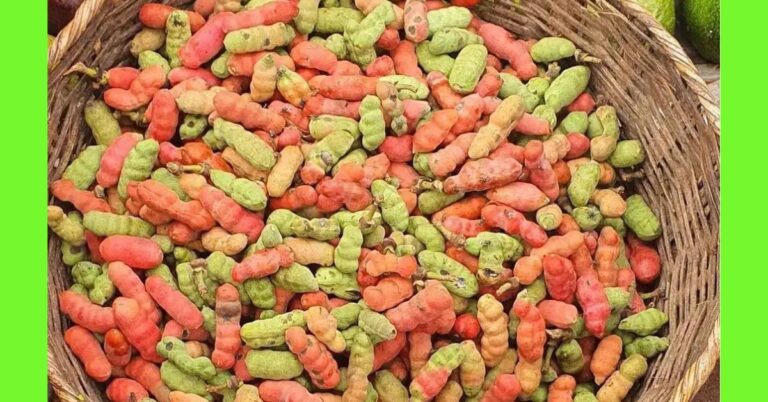How to Plant Oil Beans (Ugba): A Comprehensive Guide

The oil bean seed, commonly referred to as “Ugba” in Nigeria, comes from the African oil bean tree (Pentaclethra macrophylla), a large, tropical tree native to West Africa.
Known for its highly nutritious seeds.
Here’s a comprehensive guide on how to plant, care for, and harvest oil bean seed.
Description of the Oil Beans (Ugba) Plant
The tree, reaching heights of up to 21 meters, has a sprawling canopy and produces large, flat, and brownish pods, each containing several seeds.
Ugba seeds are often fermented before consumption and serve as a protein-rich food source.
Their earthy flavour and crunchy texture make them popular in traditional Nigerian dishes, especially in Eastern Nigeria.
Planting Season for Oil Beans Seed (Ugba)
The ideal planting season for oil bean seeds in Nigeria is during the early rainy season, typically between March and May.
Planting during this period ensures that young plants have ample water to support their growth.
The rainwater helps in seed germination and provides consistent moisture, essential for a successful Ugba crop.
Planting Oil Beans Seed (Ugba)
Step 1: Choose a Location
The oil bean tree thrives in warm, tropical climates, making Nigeria’s environment ideal for its growth.
When choosing a location, consider a sunny area with well-draining soil.
Oil beans prefer loamy soil, rich in organic matter, which enhances root penetration and nutrient absorption.
Step 2: Land Clearing and Preparation
Before planting, clear the land of weeds, debris, and any other vegetation to minimize competition for resources.
Deeply till the soil to improve aeration and root establishment.
If the soil is compact, loosen it by tilling, and consider adding organic compost or manure to enrich it with nutrients.
Step 3: Means of Propagation
Oil bean seeds can be propagated either by planting seeds or using vegetative methods such as cuttings.
However, planting seeds is the most common approach, as the germination rate is generally high under favourable conditions.
For faster growth and a more controlled harvest, propagation through seedlings from nurseries can be an efficient alternative.
Step 4: How to Plant Oil Bean Seed (Ugba) from Seed
- Seed Preparation: Begin by selecting healthy, mature seeds from reliable sources. Soak seeds in warm water for 24 hours to soften the outer shell and aid germination.
- Sowing the Seeds: Plant seeds about 2-3 cm deep in the soil, with each seed spaced approximately 5-6 meters apart to allow for the tree’s large canopy.
- Spacing and Depth: Maintain appropriate spacing between seeds to provide ample room for the tree’s expansive root system and crown.
Step 5: Watering
Newly planted Ugba seeds require regular watering, especially in the early stages.
Aim to keep the soil consistently moist but avoid overwatering, as waterlogged soil can hinder root development and cause rotting.
During the rainy season, rainfall may provide adequate moisture, but monitor the soil during drier spells.
Step 6: Apply Manure
To promote healthy growth, apply organic manure or compost to the soil before planting and periodically afterwards.
The nutrients in organic manure, particularly nitrogen, phosphorus, and potassium, enhance soil fertility and improve the tree’s overall resilience.
Fertilizing every six months during the tree’s early years can support optimal growth.
Maturity and Harvest
Oil bean trees typically take 3-5 years to mature, depending on the growing conditions and the care provided.
Once mature, the tree produces large, woody pods containing Ugba seeds.
Harvesting occurs once the pods dry and start to crack, signalling they are ready for collection.
The mature seeds can be removed, cleaned, and processed for fermentation or other uses.
Pest and Diseases
Oil bean plants are generally resilient but can be affected by specific pests and diseases, including:
- Stem Borers: These insects bore into the tree’s trunk, affecting its health and growth.
- Root Rot: Caused by waterlogged conditions or poor soil drainage, leading to decayed roots and stunted growth.
- Aphids: These small insects can infest young trees, sucking sap and causing leaf distortion.
Pest and Disease Control
To protect your oil bean plants from pests and diseases:
- Use Organic Pesticides: Regular application of organic pesticides can deter pests such as aphids.
- Improve Drainage: Avoid waterlogging by ensuring the soil has good drainage to prevent root rot.
- Prune Regularly: Removing dead or infected branches helps prevent pest infestations and reduces disease spread.
- Introduce Natural Predators: Encourage beneficial insects like ladybugs, which feed on harmful pests.
How Many Oil Beans Seed (Ugba) Plants Can I Grow on an Acre of Land and What Quantity of Oil Beans Seed (Ugba) Can I Harvest?
On an acre of land, you can plant approximately 60-80 oil bean trees, assuming each tree has 5-6 meters of spacing to allow for full growth.
Each mature tree can produce around 200 seeds annually, with variations depending on tree health and environmental factors.
Therefore, an acre of land has the potential to yield between 12,000 to 16,000 seeds per year under optimal conditions.
Planting Ugba can be a rewarding venture in Nigeria, offering both economic and nutritional benefits.
With careful attention to planting techniques, watering, and pest control, oil bean trees can thrive, providing a sustainable yield of this valuable seed for years to come.
I hope this article was helpful.
Is there any crop you want to grow and can’t find in our How to Grow category?
Let us know; leave a note in the comment box below.






